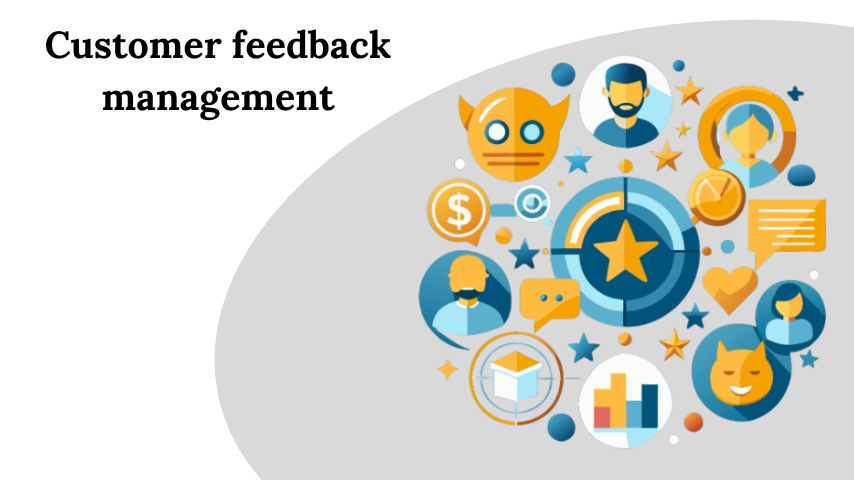In the dynamic world of marketing, understanding and leveraging customer insights is crucial for business success. CFM, which stands for Customer Feedback Management (CFM), has emerged as a powerful strategy for businesses to gain valuable insights, improve customer experiences, and drive strategic decision-making.
What is Customer Feedback Management (CFM)?
Customer Feedback Management (CFM) is a systematic approach to collecting, analyzing, and responding to customer feedback across various touchpoints. It involves:
- Gathering insights from multiple channels
- Analyzing customer sentiments and experiences
- Implementing strategic improvements based on feedback
- Continuously monitoring and adapting to customer needs
Key Components of Effective CFM
1. Feedback Collection Methods
Businesses can collect customer feedback through:
- Online surveys
- Email questionnaires
- Social media listening
- Customer support interactions
- Website feedback forms
- In-app feedback tools
- Phone interviews
- Focus groups
2. Feedback Analysis Techniques
Effective CFM requires sophisticated analysis:
- Sentiment analysis
- Text mining
- Quantitative rating evaluations
- Trend identification
- Comparative benchmarking
Benefits of Implementing CFM in Marketing
Enhanced Customer Understanding
CFM provides deep insights into:
- Customer preferences
- Pain points
- Expectations
- Satisfaction levels
Improved Product Development
By understanding customer feedback, businesses can:
- Identify feature requests
- Prioritize product improvements
- Reduce development risks
- Align products with market demands
Increased Customer Retention
Strategic CFM helps:
- Detect potential churn risks
- Address customer concerns promptly
- Demonstrate commitment to customer satisfaction
- Build long-term customer loyalty
CFM Tools and Technologies
Popular CFM Platforms
- Qualtrics: Advanced survey and feedback management
- SurveyMonkey: User-friendly feedback collection
- Zendesk: Customer support and feedback integration
- UserVoice: Product feedback and feature prioritization
- Medallia: Enterprise-level customer experience management
Implementing a Successful CFM Strategy
Step-by-Step Guide
Define Objectives
- Determine specific goals
- Identify target customer segments
- Set clear measurement metrics
Choose Appropriate Channels
- Select platforms relevant to your audience
- Ensure multi-channel feedback collection
- Create seamless feedback experiences
Design Effective Feedback Mechanisms
- Create concise, clear questions
- Use a mix of quantitative and qualitative queries
- Minimize survey fatigue
Analyze and Act on Feedback
- Utilize advanced analytics tools
- Create actionable insights
- Develop responsive improvement strategies
Challenges in CFM
Common Obstacles
- Low response rates
- Biased feedback
- Data interpretation complexity
- Technology integration
- Privacy and data protection concerns
Best Practices for CFM
Optimization Strategies
- Personalize feedback requests
- Provide incentives for participation
- Ensure quick and visible response to feedback
- Maintain transparency in improvement processes
- Continuously refine collection methods
Measuring CFM Effectiveness
Key Performance Indicators (KPIs)
- Net Promoter Score (NPS)
- Customer Satisfaction (CSAT)
- Customer Effort Score (CES)
- Response rate
- Resolution time
- Feedback implementation rate
Future of CFM in Marketing
Emerging Trends
- AI-powered feedback analysis
- Real-time sentiment tracking
- Predictive customer experience modeling
- Enhanced personalization
- Integrated omnichannel feedback systems
Q1: How often should businesses collect customer feedback?
A: Frequency depends on industry and business model. Generally, quarterly surveys with continuous micro-feedback collection provide comprehensive insights.
Q2: Can small businesses implement CFM?
A: Yes, many cost-effective and scalable CFM tools are available for businesses of all sizes.
Q3: How do I improve low response rates?
A: Offer incentives, keep surveys short, communicate the impact of feedback, and demonstrate how customer input drives improvements.
Q4: What’s the difference between CFM and customer experience management?
A: CFM focuses specifically on collecting and analyzing feedback, while customer experience management is a broader strategy encompassing entire customer interaction journeys.
Q5: How can AI enhance CFM?
A: AI can provide:
- Advanced sentiment analysis
- Predictive insights
- Automated feedback categorization
- Real-time response recommendations
Conclusion
Customer Feedback Management (CFM) is no longer a luxury but a necessity in modern marketing. By systematically collecting, analyzing, and acting on customer insights, businesses can create more responsive, customer-centric strategies that drive growth and build lasting relationships.
Successful CFM requires continuous learning, technological adaptation, and a genuine commitment to understanding and meeting customer needs. Embrace CFM as a dynamic, evolving process that empowers your marketing efforts and sets you apart in an increasingly competitive landscape.
Final Tip: Remember, effective CFM is not about collecting data—it’s about transforming insights into meaningful action that resonates with your customers.
